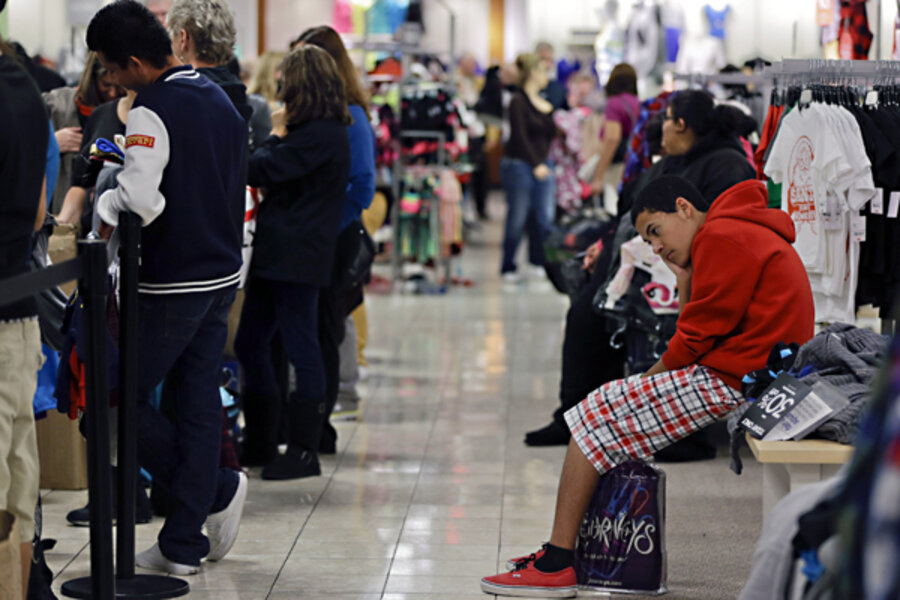Superstorm Sandy batters November retail sales
Loading...
| Washington
Americans cut back on spending last month and saw no growth in their income, reflecting disruptions from Superstorm Sandy that could hold back economic growth in the final months of the year.
The Commerce Department said Friday that consumer spending dropped 0.2 percent in October. That's down from an increase of 0.8 percent in September and the weakest showing since May.
Income was flat in the month following a 0.4 percent rise in September.
The government said work interruptions caused by the storm reduced wages and salaries by about $18 billion at an annual rate. The storm affected 24 states, with the most severe damage in New York and New Jersey.
Consumers may also be worried about automatic tax increases and spending cuts that will take effect in January if lawmakers and the Obama administration fail to strike a deal before then.
The depressed spending figures suggest economic growth will likely be weak in the October-December quarter. Consumer spending drives nearly 70 percent of economic activity.
Even discounting the effects of Sandy, income growth would have risen a still-weak 0.1 percent. After-tax income adjusted for inflation fell 0.1 percent, while spending adjusted for inflation dropped 0.3 percent.
The saving rate edged up slightly to 3.4 percent of after-tax income in October, compared with 3.3 percent in September.
The government reported Thursday that the overall economy grew at an annual rate of 2.7 percent in the July-September quarter, an improvement from the 2 percent rate of growth initially estimated. However, economists believe the acceleration in activity will be short-lived.
Many of them predict growth is slowing in the current October-December quarter to less than 2 percent, a rate that is too weak to make a significant dent in unemployment. But they expect growth to rebound in the New Year when the rebuilding phase begins in the Northeast.
In October, spending at retail business fell 0.3 percent, the first drop after three months of gains. Auto sales dropped 1.5 percent, the biggest decline in a year.
And sales weren't much better in November, according to reports from major retailers. The International Council of Shopping Centers said 18 major retailers reported sales rose 1.7 percent in November compared to the same period a year ago. The group had been expecting sales growth between 4.5 percent and 5.5 percent.
Analysts said while holiday sales got off to a strong start on the Friday after Thanksgiving, those gains were blunted by weakness in early November that reflected disruptions caused by Sandy.
Applications for unemployment benefits rose to an 18-month high in the first week of November, driven by a surge in applications in New York, New Jersey, Pennsylvania and Connecticut.
Such applications have fallen sharply since. But the increase earlier this month will likely depress job growth for November. Many economists predict that net job growth for November will range between 25,000 and 75,000 — well below the 171,000 jobs added in October.







